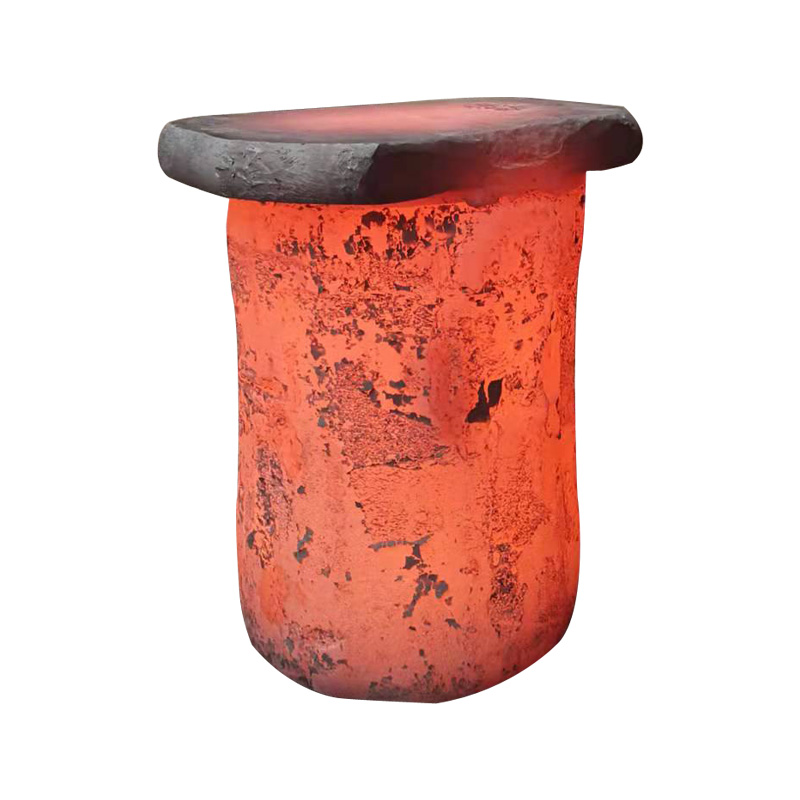How are forgings cooled?
2022-09-07
Wind power forgings manufacturers said that the key to formulate post-forging cooling specifications for forgings is to choose an appropriate cooling rate to avoid various defects. Usually, the cooling specification after forging is determined according to the chemical composition, microstructure characteristics, raw material state and section size of the blank, referring to the relevant manual information.
Generally speaking, the simpler the chemical composition of the billet, the faster the cooling rate after forging; If not, it is slow. Accordingly, carbon steel and low alloy steel forgings with simple composition are air-cooled after forging. The medium alloy steel whose alloy composition is forging should be pit cooled or furnace cooled after forging.
Wind power forgings manufacturers say that for steel with high carbon content (such as carbon tool steel, alloy tool steel, bearing steel, etc.), if slow cooling is used after forging, mesh carbide will be precipitated at the grain boundary, which seriously affects the service performance of the forgings. So after forging, the forgings are cooled rapidly to 700 ° C by means of air cooling, blowing or spraying, and then the forgings are placed in pits or furnaces for slow cooling.
For steel without phase transition (such as austenitic steel, ferrite steel, etc.) Because there is no phase change in the cooling process after forging, rapid cooling can be used. In addition, rapid cooling is required to obtain single-phase structure and prevent brittleness of ferritic steel at 475 ° C. So this forging is usually air cooled.
Wind power forgings manufacturers say that for air-cooled self-quenched steel grades (such as high-speed steel, martensitic stainless steel, high-alloy tool steel, etc.), martensitic transformation will occur due to air cooling, resulting in large structural stress and easy to produce cooling cracks. So this forging must be cooled slowly. For steels sensitive to white spots, in order to prevent white spots in the cooling process, furnace cooling should be carried out according to certain cooling specifications.
Steel forged forgings cool faster after forging, and ingot forged forgings cool more slowly after forging. In addition, for forgings with larger section size, due to the larger cooling temperature stress, the forging should be slowly cooled after forging, while for forgings with smaller section size, the forging can be rapidly cooled after forging.
Wind power forgings manufacturers say that sometimes in the forging process, the middle billet or part of the forging should be cooled to room temperature, which is called intermediate cooling. For example, blank checking or defect cleaning requires intermediate cooling. For example, when forging a large crankshaft, the middle part should be forged first, and then the two ends. After forging the middle part, the middle should be cooled so as not to affect the quality when the ends are reheated. The determination of the intermediate cooling specification is the same as that of the post-forging cooling specification.

Generally speaking, the simpler the chemical composition of the billet, the faster the cooling rate after forging; If not, it is slow. Accordingly, carbon steel and low alloy steel forgings with simple composition are air-cooled after forging. The medium alloy steel whose alloy composition is forging should be pit cooled or furnace cooled after forging.
Wind power forgings manufacturers say that for steel with high carbon content (such as carbon tool steel, alloy tool steel, bearing steel, etc.), if slow cooling is used after forging, mesh carbide will be precipitated at the grain boundary, which seriously affects the service performance of the forgings. So after forging, the forgings are cooled rapidly to 700 ° C by means of air cooling, blowing or spraying, and then the forgings are placed in pits or furnaces for slow cooling.
For steel without phase transition (such as austenitic steel, ferrite steel, etc.) Because there is no phase change in the cooling process after forging, rapid cooling can be used. In addition, rapid cooling is required to obtain single-phase structure and prevent brittleness of ferritic steel at 475 ° C. So this forging is usually air cooled.
Wind power forgings manufacturers say that for air-cooled self-quenched steel grades (such as high-speed steel, martensitic stainless steel, high-alloy tool steel, etc.), martensitic transformation will occur due to air cooling, resulting in large structural stress and easy to produce cooling cracks. So this forging must be cooled slowly. For steels sensitive to white spots, in order to prevent white spots in the cooling process, furnace cooling should be carried out according to certain cooling specifications.
Steel forged forgings cool faster after forging, and ingot forged forgings cool more slowly after forging. In addition, for forgings with larger section size, due to the larger cooling temperature stress, the forging should be slowly cooled after forging, while for forgings with smaller section size, the forging can be rapidly cooled after forging.
Wind power forgings manufacturers say that sometimes in the forging process, the middle billet or part of the forging should be cooled to room temperature, which is called intermediate cooling. For example, blank checking or defect cleaning requires intermediate cooling. For example, when forging a large crankshaft, the middle part should be forged first, and then the two ends. After forging the middle part, the middle should be cooled so as not to affect the quality when the ends are reheated. The determination of the intermediate cooling specification is the same as that of the post-forging cooling specification.

X
We use cookies to offer you a better browsing experience, analyze site traffic and personalize content. By using this site, you agree to our use of cookies.
Privacy Policy



